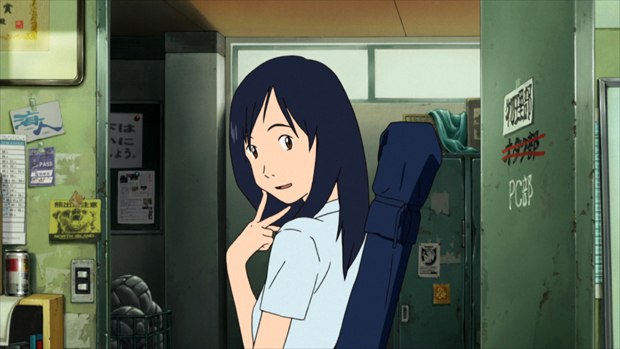Find out what the director of the latest anime hit and potential Oscar nominee has to say about social networking and animation.
Mamoru Hosoda follows his successful The Girl Who Leapt Through Time (2006) with the acclaimed Summer Wars, a cyber punk romance about technology, family and social networking, which has been shortlisted for an Oscar and has a year-end theatrical qualifying run. A timid high school student and math whiz cracks a digital math riddle and inadvertently causes global panic when an AI program uses the code to hack the mainframe of his virtual world (Oz), where millions of people and governments interact with their avatars. While this occurs, the student grows closer to a friend's influential family, which is in the midst of celebrating the matriarch's 90th birthday: a time for bringing the estranged members closer together. Produced by Madhouse, Summer Wars is distributed by GKids (The Secret of Kells). Bill Desowitz interviewed director Hosoda by email about the three-year production, longer than his previous film as a result of the large number of characters.
Bill Desowitz: What inspired you to make Summer Wars, and what influenced the Oz environment and the theme of family?
Mamoru Hosoda: I got the inspiration from new, expanded social networks such as Second Life or Facebook. Maybe in the near future, I thought those social networks could be like the Oz in the film, both visually and functionally. Regarding the theme of family, I got the inspiration from many films that I saw at film festivals all over the world, and also from my [recent] marriage [following the making of The Girl Who Leapt Through Time].
BD: What about the role of technology and social networking? Is this a cautionary tale about it getting out of hand? A replacement for true intimacy?
MH: The idea that as reliance on social networks grows, people begin to lack real communication and intimacy… I think this is just a one-sided view. I cannot deny the opinion, of course, but, originally, technology and digital social networks are something that make our lives easy and comfortable. There are many people that have found new relationships because of these new social networks, so I want to affirm both ways of communication that currently exist.
BD: What about the design of Oz, particularly its clean simplicity, and the contributions of the various character designers?
MH: I wanted to make Oz feel like something that men and women of all ages, millions of people all over the world, are using daily, so I've tried to keep the design simple. For the color and design of the Oz world, I actually had inspiration from Nintendo games, like the Wii.
BD: Why did you choose Ueda as the setting? Talk about the old fashioned designs utilized by Yoji Takeshige. You might say his Studio Ghibli influence is present.
MH: My wife's home is in the Ueda city of Nagano. Visiting there several times, I really liked the place. There is the impressive history of the Sanada clan, and also beautiful scenery of nature and old Japanese houses. I thought: there would be no one but Yoji who could draw this.
BD: Talk about the character designs and the contributions of Yoshiyuki Sadamoto.
MH: Yoshiyuki Sadamoto is one of the best animation/comic artists in Japan, and I'm a big fan of him. It's really an honor to have him as a character designer again, after working together for my previous film, The Girl Who Leapt Through Time.
His character designs are so unique, but everybody really loves them.
BD: What was the experience like at Madhouse compared to The Girl Who Leapt? I understand it took three years and the extra time was devoted to the large number of characters in the family.
MH: Compared to the previous title, it's true there were many more characters, so it was quite hard to put everything together: script, storyboard, animation, voice recording, etc... But so many staff helped us in finishing the film.
BD: How large an animation team did you have? And talk about the contributions of your animation directors, action animation director and CG director.
MH: There were 48 key animators. In total, maybe over 300 staff. The animation director [Hiroyuki Aoyama] was in charge of the real world, and the action animation director [Tatsuzo Nishita] was in charge of the Oz world. To create the 'real' Oz world and millions of avatars there, that was the CG director [Ryo Horibe].
BD: Did they set up a new pipeline at Madhouse and create any proprietary plug-ins? What animation software did they use and how much CG was there?
MH: Most of the staff were freelance, including myself. We used the software After Effects, and Digital Frontier, which was in charge of CG, created a program that creates millions of avatars with different colors and designs. About 30% of the film was CG.
BD: What are you proudest of with Summer Wars?
MH: I'm proud to have seen so many people who told me that they enjoyed the movie. Thanks to those people, I got a ticket to create the next new film.
BD: What can you tell us about it?
MH: I'll do my best to have everybody see the movie as soon as possible, but unfortunately can't say much about it just yet.
Bill Desowitz is senior editor of AWN & VFXWorld.











